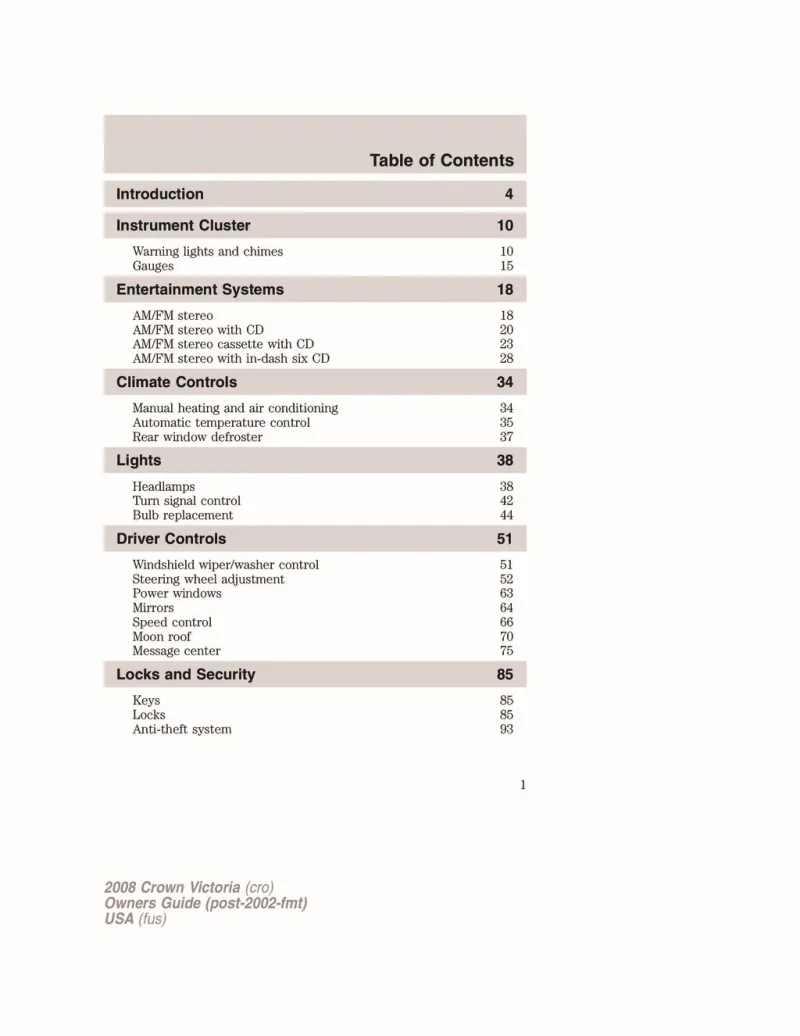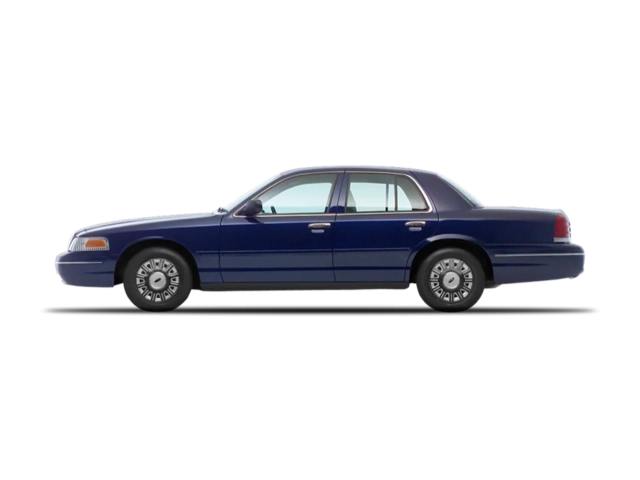2008 Ford Crown Victoria Owner's Manual

Table of Contents
2008 Ford Crown Victoria Overview
Introduction
The 2008 Ford Crown Victoria represents the culmination of decades of engineering and refinement, marrying classic American automotive design with enduring performance. Known for its spacious interior and robust build, the Crown Victoria has been a popular choice for law enforcement agencies and family fleets alike. Emphasizing reliability and comfort, this sedan stands as a testament to the Ford legacy in producing vehicles that last, making it a favorite among enthusiasts and practical drivers alike.
Powertrains
The 2008 Crown Victoria comes equipped with a formidable 4.6-liter V8 engine that delivers a robust 250 horsepower and 305 lb-ft of torque. This powerhouse is paired with a smooth-shifting 4-speed automatic transmission, allowing the vehicle to tackle daily commutes and highway driving with ease. The rear-wheel-drive layout contributes to its balanced handling and confident performance, making it suitable for a range of driving conditions.
Trims
Features
Owner's Manual
User manual download
The Ford Crown Victoria owner manual for the 2008 model year is to be found in PDF downloadable format on this page. The owner manual for the model year 2008 is free and in English, but the repair manuals are usually not easy to get and may cost more.
Manual Questions
Fill the form below and someone will help you!

